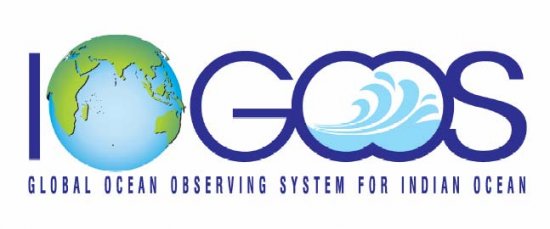ESSO - Indian National Centre for Ocean Information Services
(An Autonomous Body under the Ministry of Earth Sciences, Govt. of India)
Remote Sensing Capacity Building
Project Title: Remote Sensing Applications
Proponent: Dr.K.RadhaKrishnan and Prof.Mervyn Lynch
Proponent: Dr.K.RadhaKrishnan and Prof.Mervyn Lynch
- About
- Satellites
- Training Progammes
- Training facilities
- Countries
- Parameters
About
Remote sensing data could be used to provide inputs for coastal land use, shoreline changes, etc.Remote sensing data is being used for an operational purpose.The different physical (SST, Currents, etc) and biological products (Ocean Colour) could be derived from satellite data. Derived parameters such as currents (from sequential data) and productivity are important parameters. Shallow water bathymetry and benthic cover can also be derived from satellite data.
Satellites
Satellite missions that are valuable sources of remote sensing data for IOGOOS are:
- INSAT
- MTSAT
- IRS P5/6
- Oceansat1
- Feng Yung
- NOAA AVHRR
- SeaStar
- Hyperion
- Meteosat
- Envisat
- Quickscat
- Topex/Poseidon
- ERS-2
- Jason
- Megha Tropiques Oceansat2
- MTSAT
- NPP/NPOESS
- METOP
New satellite systems to be launched in the near future include:
These platforms variously include visible, infrared, microwave sensing instruments.
Training Programmes
Short Duration Training Programs proposed: At least two or three should be conducted during 2006. IOGOOS Secretariat to follow up on the following prospects
1) India, Hyderabad 2006: "Ocean Colour Applications" (Funding: IOCCG / POGO-SCOR-IOC)
2) India, Ahmedabad 2006: "Physical Oceanographic Parameters" (Funding: POGO-SCOR-IOC)
3) India, Dehradun 2006: "Coastal Remote Sensing and GIS" (Funding: IOCCG / POGO-SCOR-IOC)
4) Thailand, Bangkok 2006: "Coastal Remote Sensing and GIS" (Funding: IOCCG / POGO-SCOR-IOC)
Long Duration Training Program proposed: CSSTE: Asia-Pacific, Dehradun
Training Facilities
Remote Sensing Training Facilities in the region are:
1) Australia,-Leeuwin Centre, Universities
2) India-Indian Institute of Remote Sensing, CSSTE-Asia Pacific, Dehradun, Universities
3) Thailand-AIT Bangkok
4) Indonesia-Lapan, Bakosurtanal, University of Gajah Mada
5) South Africa-Capetown
Countries
Countries in the region with a remote sensing program:
Australia
India
Pakisthan
Malaysia
Indonesia
Iran
Kenya
Mauritius
Reunion
Singapore
South Africa
Thailand
Ocean Remote Sensing Capability in the Region:
Australia
India
Indonesia
Reunion
South Africa
Parameters
| ||||||||||||||||||||||||||||||||||



